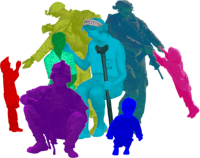Child trafficking and human slavery are heinous crimes that continue to plague societies worldwide. Despite international efforts to combat these issues, significant legal and enforcement challenges remain. Understanding these challenges is crucial for developing effective strategies to address and ultimately eradicate these crimes.
Legal Challenges
Inconsistent Legal Frameworks
One of the primary legal challenges in combating child trafficking and human slavery is the inconsistency in legal frameworks across different countries. While international protocols like the UN Trafficking in Persons Protocol provide a comprehensive definition of trafficking, not all countries have adopted or fully implemented these standards into their national laws. This inconsistency can lead to gaps in protection for victims and difficulties in prosecuting traffickers who operate transnationally.
Limited Victim Protections
Many legal systems lack adequate protections for victims of trafficking, which can discourage them from coming forward. Victims may fear prosecution for crimes they were forced to commit while being trafficked, such as immigration violations or prostitution. Without assurances of immunity or support services, victims may be reluctant to cooperate with law enforcement.
Challenges in Prosecution
Prosecuting traffickers can be complex due to the clandestine nature of the crime and the need for victim testimony, which can be difficult to obtain if victims are traumatized or fearful of retaliation. Additionally, traffickers often use sophisticated methods to evade detection, making it challenging for prosecutors to gather sufficient evidence.
Enforcement Challenges
Underreporting and Identification Issues
A significant enforcement challenge is the underreporting of trafficking incidents due to inadequate identification of victims by law enforcement agencies. Many officers lack training on recognizing signs of trafficking, leading to missed opportunities for intervention. Furthermore, cultural barriers or mistrust of authorities can prevent victims from seeking help.
Resource Limitations:
Law enforcement agencies often face resource constraints that hinder their ability to effectively combat trafficking. Limited funding can result in insufficient personnel dedicated to investigating trafficking cases or inadequate technology and tools needed for tracking traffickers’ activities.
Coordination Across Jurisdictions
Human trafficking frequently involves crossing national borders, requiring coordination between multiple jurisdictions with varying levels of commitment and resources dedicated to combating the crime. Discrepancies in priorities or communication barriers between countries can impede joint efforts against trafficking networks.
Implementation Gaps
Data Collection Deficiencies
Accurate data collection is essential for understanding the scope of human trafficking and developing targeted interventions; however, many regions suffer from poor data collection practices. The FBI’s Uniform Crime Reporting (UCR) Program has been criticized for undercounting human trafficking offenses due to inadequate reporting by local law enforcement agencies.
Lack of Comprehensive Strategies
While many countries have national action plans against human trafficking, implementation often falls short due to a lack of comprehensive strategies that address prevention, protection, prosecution, and partnership (the “4 Ps” approach). Effective implementation requires collaboration among government agencies, non-governmental organizations (NGOs), and international bodies.
Insufficient Training Programs
Training programs for law enforcement officers are crucial for improving victim identification rates and enhancing investigative techniques; however, many jurisdictions do not prioritize such training due to budgetary constraints or competing demands on police resources.
